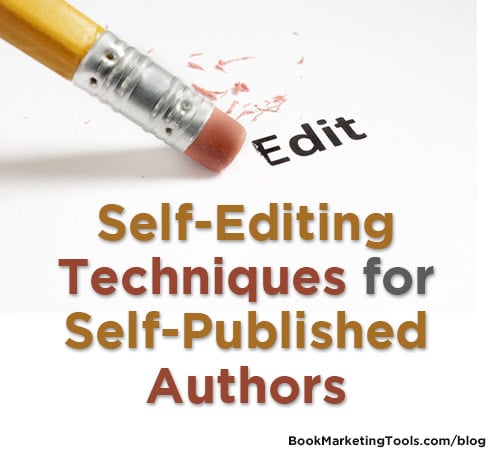Editing your book is a crucial, and sometimes overlooked, part of the publishing process. In the excitement of getting the written word published, new authors sometimes don’t edit their book, and if they do work hard to get people to buy the book, they end up getting bad reviews because of the lack of editing. Here are some tips from author Peter Mulraney to help you self-edit your book, if you aren’t able to hire an editor.
Everywhere you look, someone is encouraging you to employ an editor.
For most of us venturing into the world of indie publishing, the services of professional editors are beyond our budgets. That does not mean that you skip the editing step. If you can’t afford a professional editor, editorial responsibility rests with you. The mistake is trying to edit in isolation.
I have a small team of associates for editing tasks. By the way, you can’t just pick anyone. You need people with language skills and an eye for detail, and people who read.
The first thing to understand, if you are embarking on self-editing with support, is that editing is more than fixing typos.
The Structural Edit Stage
Remember those teachers insisting that essays had to have an introduction, a body of argument supported by evidence, and a conclusion at the end? That’s an example of structure.
Whatever you write needs a structure to make sense. That’s obvious if you’re writing non-fiction but it applies to storytelling as well. Every story needs a beginning, middle and end.
Structural editing is deciding whether your story works, and if it has all the required parts for your genre. For example, does your murder mystery have all the story components that readers expect? If something is missing or the components are not connected the story will not work.
The Story Grid by Shawn Coyne, explains how structural editing works. Invest in a copy.
One interesting thing about the Story Grid is that it allows you to start editing your story before you start writing. The structure of your story is in your outline, which you can analyze and edit before you start putting words into your story. If you’re not into outlining, you can apply the Story Grid to your draft in a post-writing structural edit.
Structural editing is vital if you are serious about the quality of your writing. If your story doesn’t work, it doesn’t matter whether your copy is perfect or not, so focus on the structural edit first.
The Copy-Editing Stage
This is what most of us think of as editing. It covers a multitude of sins, including spelling, punctuation, grammar and word choice, and formatting.
For an insight into the deeper mysteries of copy-editing, get yourself a copy of The Frugal Editor by Carolyn Howard-Johnson or, if you’re in a hurry, try Author’s Quick Guide To Editing Your Book by Kristen Eckstein.
Despite all the advances in writing software, you still can’t rely on the spellchecker feature. If you’ve turned off the grammar checker, I suggest you turn it back on and look at every word it highlights. Grammar checker picks up those words with multiple spellings which sound the same; for example: there, their and they’re. You still have to decide which one you wanted to use. Artificial intelligence isn’t that smart, yet.
Because our minds work the way they do, you can’t trust yours to do the final proofreading edit, once you have corrected the errors identified by the copy-editing. This is where beta readers and the rest of your support team come in.
Having others help with editing is crucial. They may not know all the fancy editing terminology a professional editor uses, but they can indicate where the story does not work for them, and your word choice and other errors.
Remember, as the author and publisher, you have the final say on word choice and any other point.
A Few Self-Editing Tips
Don’t try and do it all at once. Make a list of the things that need to be checked, then pick one thing from your list and go through the draft with that in mind. Then pick something else and check for that.
I print my draft and mark it up with a pencil before I change my electronic copy. It pays to find out whether your team likes editing on paper or electronically as well.
Before I pass the edited draft onto my team, I like to read it out loud. It’s amazing how many sentence constructions can be improved with that one simple method.
Finally, don’t rush into editing your freshly finished draft. I find that my editing is more successful if I let the draft sit for a month before I start. In fact, it pays to get into your next project before you start editing that draft.
Peter Mulraney is based in Adelaide, Australia, where he works as a public servant. He is the author of 7 books including the Inspector West series of crime/romance novels, the Living Alone series of self-help books for men who find themselves living alone, and Sharing the Journey: Reflections of a Reluctant Mystic. You can find out more about Peter and his books at www.petermulraney.com and follow him on Twitter @PeterMulraney1

